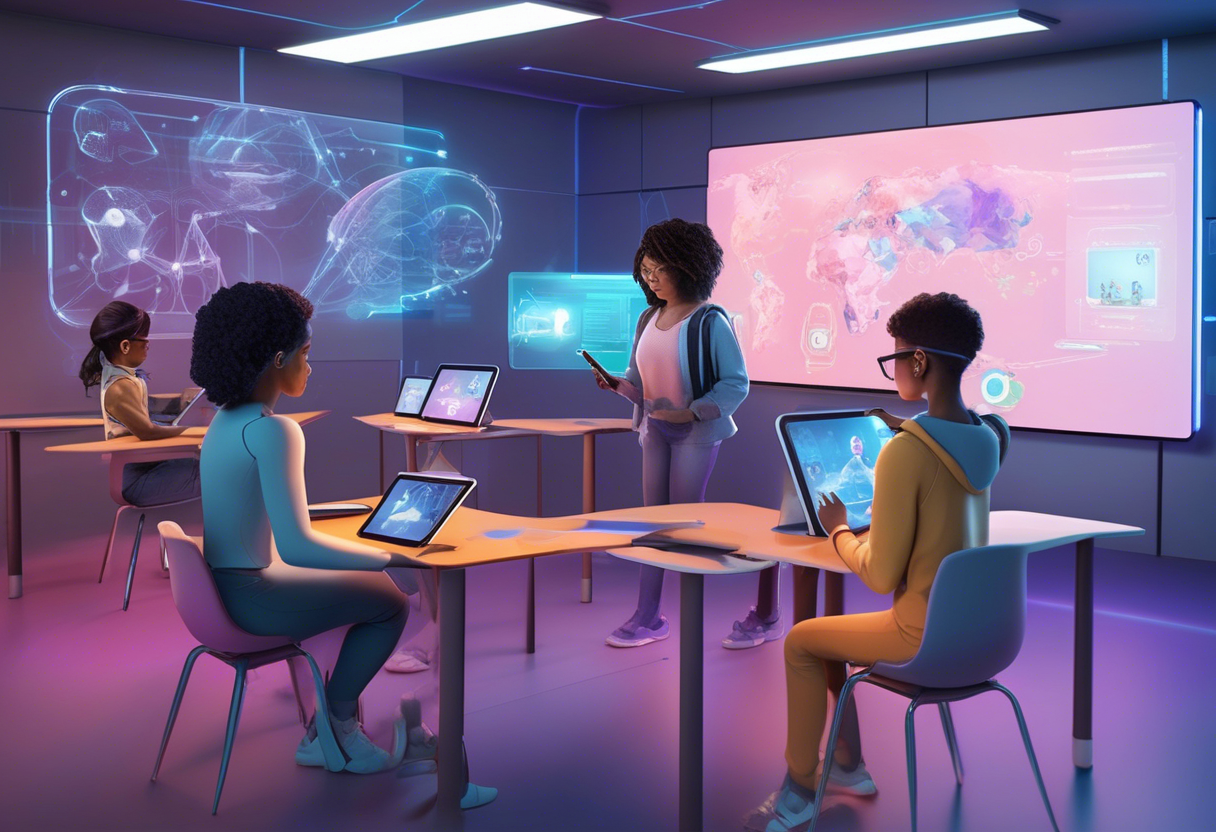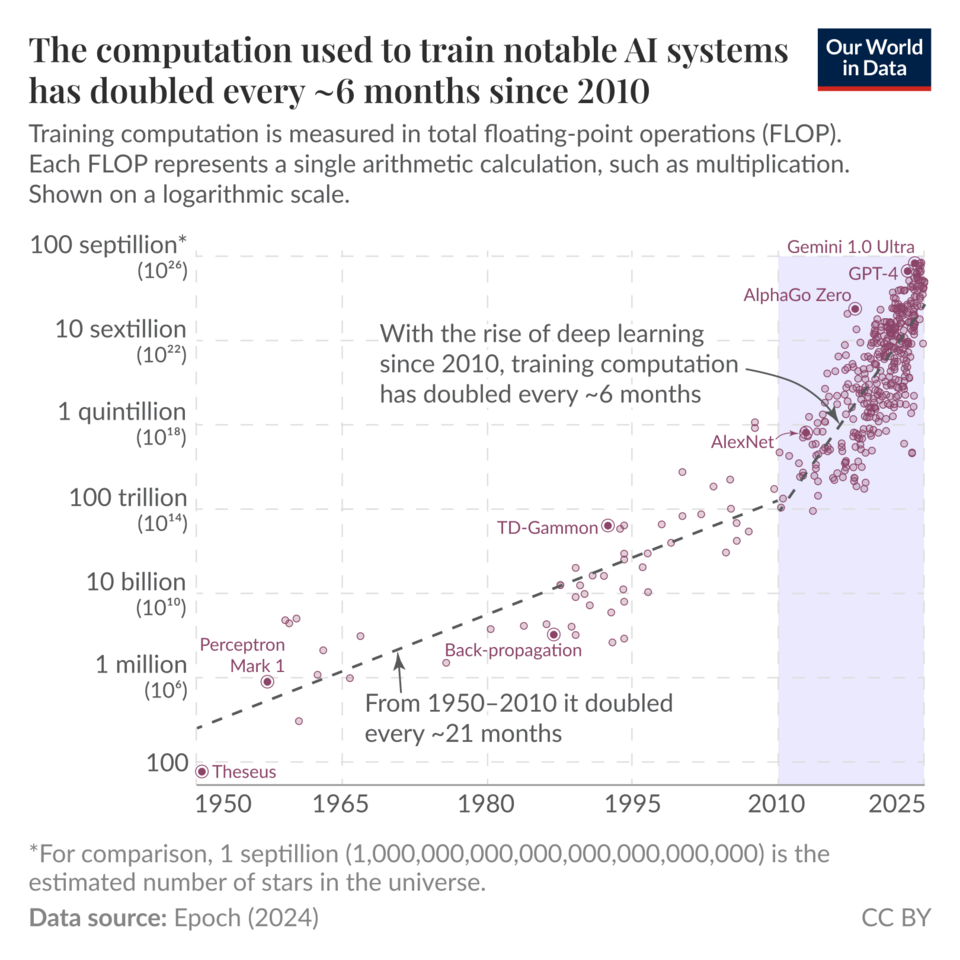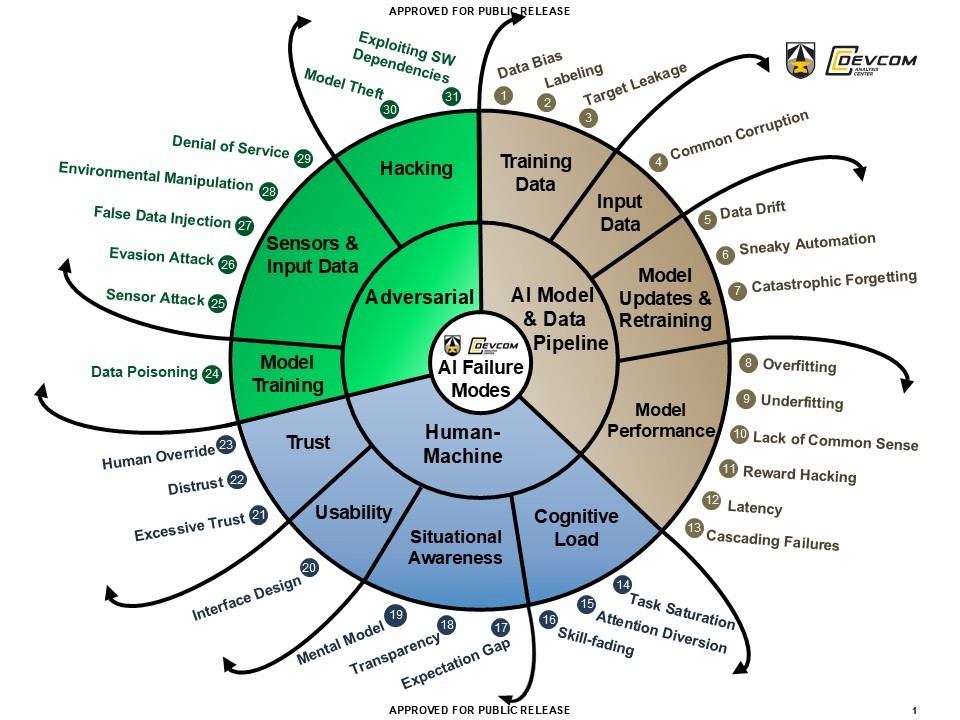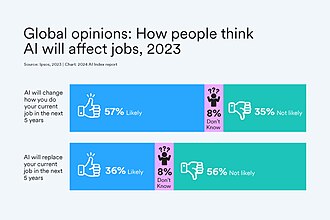
In our digital world, keeping up isn't just nice—it's a must. As industries change, so do the skills we need. That's where upskilling with AI comes in. It's changing how we learn and grow at work. Did you know companies using AI for training see a 20% boost in productivity? That's big. In this article, we'll look at AI-powered upskilling: what it is, how it helps organizations, and how you can make it work. We'll also cover the challenges and common questions about this strategy. Whether you're a company wanting to boost employee skills or someone looking to grow your own, this guide will give you the insights you need. Let's see how AI can boost your career!
Defining Upskilling and Reskilling in the AI Era
The Role of AI in Upskilling and Reskilling
Upskilling is all about boosting the skills you already have. Think of it as getting better at your current job by learning new things, like how to use AI tools such as generative AI and chatbots.
Reskilling, on the other hand, is a bit different. It’s about picking up new skills because your job has changed or might disappear due to things like automation.
- Upskilling keeps you learning all the time.
- Reskilling helps you adapt when your job needs a new direction.
With about 40% of jobs possibly needing reskilling soon, these strategies are key for companies to stay ahead in the digital world.
For more insights on upskilling with AI, check out this resource: Upskilling with AI.
Organizational Benefits of AI-Powered Upskilling
Aligning AI Upskilling with Business Objectives
Aligning AI upskilling with business goals is crucial for enhancing organizational performance. Tailored AI training that targets specific skill gaps and aligns with business needs is more effective than a one-size-fits-all approach. Integrating AI upskilling into long-term plans, such as career paths and reward systems, ensures sustainability and motivates employees.

Involvement from leadership is essential. Leaders should familiarize themselves with AI tools to facilitate their adoption and align AI projects with company goals. Establishing AI centers of excellence within organizations encourages the sharing of knowledge and the application of AI across various business areas, ensuring alignment with the overall strategy.
Leveraging AI to Identify Skill Gaps
AI can analyze employee performance data and certifications to identify skill gaps more accurately than traditional methods. Machine learning can effectively match mentors and mentees based on backgrounds and interests, thereby focusing skill development.

AI tools can also suggest career paths and upskilling opportunities tailored to each employee, ensuring their growth aligns with organizational needs. Regular assessments and customized training based on these identified gaps ensure that upskilling addresses the most critical AI skills required in the workforce.
Step-by-Step Guide to Implementing AI-Powered Upskilling
Assess Organizational and Team Needs
Identify AI Skill Gaps in Your Team
To kick off AI-powered upskilling, take a hard look at your current skills landscape. Use surveys and assessments to see where your team stands with AI knowledge. This means checking out what your employees can do with AI tech and methods right now.
Doing a skills gap analysis helps match what folks are doing now to what they'll need to do with AI in the future. Get feedback from everyone—employees, managers, and execs—to see where AI skills are most needed and where people feel lost. Look at performance data to spot recurring issues that might point to skill gaps. And don't forget to compare your team's skills to what's happening in the industry to stay competitive (source).
Gather Input on AI's Potential Impact Areas
Talk to folks at all levels to get a full picture of where AI skills could really make a difference. Have chats and focus groups with employees to hear their thoughts and hopes about AI upskilling. Check in with managers and execs to make sure skill development lines up with business goals.
This team effort makes sure the upskilling program is relevant and backed by everyone, helping you focus on where AI can add the most value (source).
Customize Upskilling by Role or Department
Dig into specific roles or departments to fine-tune your upskilling plan. Look at job descriptions, how people are performing, and what each department wants to achieve to see how AI can boost productivity and creativity.
For instance, data analysts might need more machine learning skills, while marketing teams could benefit from AI-driven customer insights. Customizing training for different roles ensures employees learn skills they can use right away, maximizing training impact (source).
Set Clear Goals and Objectives
Define AI Upskilling Goals Aligned with Business Needs
Define clear, measurable goals that tie the AI upskilling effort to bigger business objectives. These goals should show what you want from the training, like boosting efficiency or cutting down manual tasks.
For example, you might aim to cut data analysis time by 30% with AI tools. Clear goals give direction and keep everyone motivated, making sure efforts lead to real results (source).

Determine Key Metrics for Measuring Success
Pick key performance indicators (KPIs) to track how well the AI upskilling is going. KPIs might include how quickly teams are adopting AI, the number of AI-driven projects, or gains in process efficiency.
These metrics help gauge the training program's success and impact. Keeping an eye on these KPIs lets you tweak the training as needed to stay aligned with business goals (source).
Establish Timelines and Milestones for Progress Tracking
Create a timeline with clear milestones to guide the AI upskilling rollout. This should outline key stages like completing basic courses, starting practical AI projects, and hitting specific KPIs.
Realistic timelines help manage expectations and keep things moving steadily. Regularly check and adjust the timeline if priorities shift (source).
Develop a Tailored AI Training Program
Create Training Content Targeting Skill Gaps
Craft training content that tackles the skill gaps you found and aligns with your organization's goals. Cover both basic AI concepts and advanced topics that matter to your team. Mix in theory and hands-on practice so employees not only get AI principles but can also use them in their jobs.
Work with AI experts and instructional designers to create engaging materials (source).
Decide on In-House or External Training Platforms
Decide on the best training format for your team. In-house programs led by AI experts offer tailored content that addresses your specific challenges and goals. Alternatively, external platforms offer a range of courses and resources, often with the flexibility of self-paced learning.
A hybrid approach could give the best of both worlds, allowing employees to learn at their own pace with expert guidance (source).
Incorporate Practical AI Applications for Relevance
Include practical, role-specific AI applications and use cases in the training to make it more relevant and impactful. Give employees chances to work on real projects that show AI in action in their roles.
For instance, finance teams might work on predictive analytics for budgeting, while customer service could explore AI chatbots. These experiences reinforce learning and show employees AI's direct benefits in their daily work (source).
Implement the Training Program
Launch Training in Phases to Manage Learning Load
Introduce the training program in phases to prevent overwhelming employees. Start with foundational courses on AI concepts, then gradually add advanced topics and practical applications.
This step-by-step approach lets employees build skills over time, boosting their confidence and competence. It also allows for feedback and adjustments to the training content (source).
Facilitate Hands-On Learning and Continuous Development
Provide a mix of learning experiences, including hands-on sessions, workshops, and continuous learning opportunities. Hands-on sessions let employees practice in a controlled setting, reinforcing their learning. Workshops encourage collaboration and knowledge sharing.
Continuous learning options, like online courses, help employees stay updated on AI trends (source).
Empower Employees to Direct Their Learning Pathways
Motivate employees to own their learning paths by promoting self-advocacy. Give them the tools and resources to explore AI topics that interest them and align with their career goals. Recognize and reward those who engage in learning and apply new skills to innovate and improve the organization.
Empowering employees to control their learning fosters a culture of continuous development (source).
Establish Support Structures and Culture
Create AI Centers of Excellence for Knowledge Sharing
Create internal AI centers or learning hubs to support knowledge sharing and mentorship. These centers can be a resource for AI expertise, offering tools, training materials, and expert advice. Encourage collaboration and mentorship to build a strong community of AI practitioners who can share insights and experiences.
This supportive environment helps maintain the momentum of the upskilling initiative (source).
Develop Cross-Functional Teams for Accountability
Create cross-functional groups to promote accountability and collaboration. These groups, with members from different departments, can oversee the upskilling initiative and ensure it aligns with organizational goals. They also help break down silos and encourage a more integrated approach to AI adoption.
Involving employees from various functions brings diverse insights that enhance the training program (source).
Integrate AI Skills into Career Development Plans
Incorporate AI skills development into the organization's long-term plans and career paths. Aligning AI upskilling with the organization's vision ensures it stays a priority and gets the support it needs. Define clear career paths that include AI skills, offering employees a roadmap for growth and development.
This integration supports strategic goals and helps attract and retain top talent (source).
Monitor, Evaluate, and Iterate
Gather Feedback and Evaluate Against KPIs
Regularly gather feedback from participants to assess the training program's effectiveness. Use surveys, interviews, and focus groups to understand employees' experiences. Measure success against KPIs to evaluate the program's impact and spot any gaps.
This ongoing evaluation keeps the training relevant and effective, offering data for improvements (source).
Assess Training's Impact on Business Outcomes
Look at how the training program affects business outcomes and employee performance. Check metrics like productivity, innovation rates, and customer satisfaction to see its contribution to organizational goals. Evaluate individual performance to identify skill changes.
This analysis gives insights into the program's success and guides future initiatives (source).
Revise Training Based on Feedback and Trends
Use insights from evaluations to update training materials and approaches. Continuously adapt the program to address gaps and incorporate new AI trends. Update content to reflect changes in goals, ensuring it stays relevant.
Regular reviews and updates keep the training effective (source).
Sustain and Scale the Initiative
Embrace Continuous AI Upskilling
See AI upskilling as a continuous journey, not a one-time event. AI tech is always changing, so ongoing learning is key. Encourage a culture of continuous improvement where employees are motivated to keep up with AI developments.
This approach keeps the organization agile and competitive (source).
Cultivate a Learning Culture
Promote a culture of learning and adaptability. Encourage employees to seek new learning opportunities and share their insights. Provide access to resources for ongoing development, like online courses and workshops.
By valuing learning, you create an environment where employees embrace AI and contribute to success (source).
Scale Successful Programs for a Future-Ready Workforce
Scale successful AI upskilling programs across the organization. Identify effective initiatives and expand them to other teams. Share best practices to ensure everyone benefits from the training.
Expanding successful programs creates a skilled workforce ready to leverage AI for growth (source).
Challenges in Upskilling with AI
Overcoming AI Training Barriers
Overcoming AI Training Barriers involves addressing significant challenges such as the rapid advancement of AI technology, which outpaces current training capabilities, and the widening digital skills gap that exacerbates the AI divide.
- Limited AI Initiatives: Many companies focus on small-scale AI projects rather than comprehensive training programs, hindering skill development.
- Job Automation Concerns: With 40% of employers considering job cuts due to automation, entry-level positions are becoming scarce.
- Global Job Anxiety: Approximately two-thirds of people worldwide fear that AI will significantly impact their lives.

To address these issues, robust training programs and initiatives to bridge skill gaps are essential. This approach will enable individuals to transition into roles that AI cannot easily replace, such as data analysis using SQL or Python.
Strategies for Continuous AI Learning
Promoting continuous learning requires the development of national AI skills plans and industry-led training programs. Collaborative efforts among governments, industries, and educational institutions are crucial:
- AI Apprenticeships: Initiatives like registered apprenticeships focus on building AI infrastructure.
- Educational Leadership: Organizations such as the National Academy for AI Instruction set standards for AI-focused education.

Upskilling should emphasize practical courses over entirely new fields, enhancing flexibility in the workforce. Monitoring AI's impact on the job market and devising innovative retraining methods will ensure individuals can adapt effectively to changes.
FAQs on AI-Powered Upskilling
Best AI Tools for Upskilling with AI in 2025
To really boost your skills with AI, it's smart to team up with experts who know their stuff. Generative AI and chatbots are big players here, especially for jobs like customer service where prompt engineering comes in handy. Programs that mix industry know-how with support from government and employers are great for learning the AI skills that really matter. Take customer service reps, for example. They're learning to use AI chatbots to answer questions better, thanks to prompt engineering techniques.
Identifying Skill Gaps with AI for Employees
To spot where employees need to up their game, companies should first check out their current AI skills. Setting up AI centers of excellence can help with this by fostering knowledge sharing and mentorship. Government-led national initiatives can also play a role by pinpointing key jobs and creating skill frameworks to guide training.

Companies might even set up their own AI learning hubs where workers can team up to find out what skills they're missing and get the right training.
Industries Most Impacted by AI Upskilling
Some industries, like those working on AI infrastructure—think electricians and advanced HVAC techs—are getting a big push in AI skills because they're crucial to keeping AI systems running. Customer service is another area feeling the AI wave, as employees start using generative AI and chatbots to do their jobs better.

AI is shaking up the job market, and it's clear that digital skills are becoming more important, especially in sectors not used to AI. Construction and maintenance roles are getting more AI training, while service industries are weaving AI tools into everyday tasks.